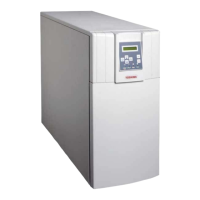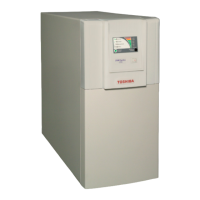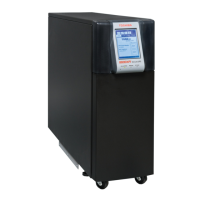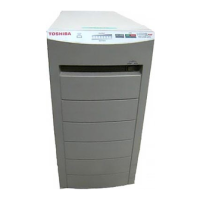What to do if my Toshiba 1000 batteries are overcharged?
- LlarrygonzalesJul 26, 2025
If your Toshiba UPS batteries are overcharged, turn off the loads and then turn off the UPS. Then call your local dealer.
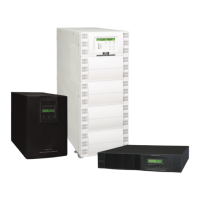
What to do if my Toshiba 1000 batteries are overcharged?
If your Toshiba UPS batteries are overcharged, turn off the loads and then turn off the UPS. Then call your local dealer.
What to do if my Toshiba 1000 has an output overload?
If your Toshiba UPS is overloaded in Line Mode, it means more power is required than the UPS can provide, causing it to operate in bypass. To resolve this, remove loads from the UPS, starting with the least critical. If this solves the problem, the UPS will return to normal operation.
Why is my Toshiba UPS overheating?
Your Toshiba UPS may be overheating due to a high ambient temperature. Make sure that the UPS fans and vents are not blocked and that the ambient temperature is less than 40° C. If the problem continues, contact your service representative.
What does it mean when my Toshiba 1000 UPS shows a site wiring fault?
A site wiring fault on your Toshiba UPS indicates that voltage has been detected between neutral and ground. This may be due to the UPS main connector having the wrong polarity. Try rotating the connector. It could also mean the UPS is installed to the main supply without a ground. See section 4.3 for information on how to disable the Site wiring alarm.
What causes a bus fault in a Toshiba 1000?
A bus fault in your Toshiba UPS is caused by high internal DC bus voltage. To address this, turn off the loads, turn off the UPS, and call the service representative.
What to do if my Toshiba 1000 UPS charger fails?
If the charger on your Toshiba UPS fails, phone a service representative.
What to do if my Toshiba 1000 is on battery?
If your Toshiba UPS is operating on battery, save your data and perform a controlled shutdown.
| Topology | Line Interactive |
|---|---|
| Frequency | 50/60 Hz |
| Communication | USB |
| Operating Temperature | 0-40°C |
| Storage Temperature | -15-45°C |
| Humidity | 0-95% non-condensing |
| Battery Type | Sealed Lead Acid |
Explains safety alert symbols and signal words like DANGER, WARNING, CAUTION.
Defines WARNING, CAUTION/ATTENTION, and CAUTION signal words and their meanings.
Describes special hazard symbols like Electrical Hazard and Explosion Hazard.
Defines qualified personnel and lists their essential training and knowledge.
Provides cautions for handling UPS batteries, including electrolyte hazards.
Lists strict adherence requirements for working with batteries, including safety measures.
Lists precautions for installing the UPS in suitable locations and conditions.
Provides guidelines for conductor routing, grounding, and conduit usage.
Lists precautions to follow during UPS operation, including environmental and handling.
Advises caution with hot components and proper procedures for load connection/disconnection.
Provides wiring guidelines for 240V, 208V, and 120V configurations for the 2400VA unit.
Details how to connect the UPS to main supply, loads, and external battery cabinets.
Details connecting the 6000 VA UPS and battery cabinets, and battery charging.
Lists and describes the default settings for primary UPS parameters on the front panel.
Provides step-by-step instructions for starting up and shutting down the UPS.
Provides a guide to troubleshoot common UPS issues displayed on LCD, with audible alarms.
